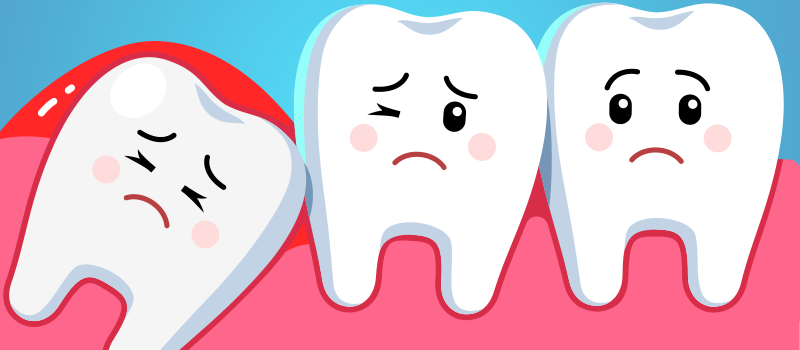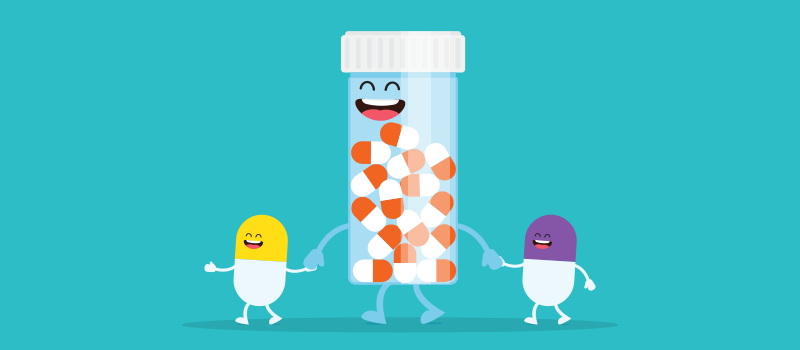What’s the Buzz
The Bee Healthy Blog
Wisdom Teeth Removal: What to Expect

If your dentist has recommended wisdom teeth extraction, it’s not unusual to be anxious about the procedure, but you don’t need to be. Wisdom teeth removal is a common and mostly painless procedure done by a dentist or oral surgeon. Please continue reading to find out what happens during wisdom teeth removal surgery.
When do wisdom teeth appear?
Wisdom teeth is the common name for the third molars. There are four of them in the mouth, one in each back corner. These teeth are the last to come in, typically between the ages of 17 and 25 years. That’s where the name comes from because wisdom teeth appear when a person is mature and (hopefully) wise.
Is it normal not to have wisdom teeth?
In most people, the four wisdom teeth erupt during the late teens to early twenties. When they come through properly without getting impacted (stuck) in the jaw bone, wisdom teeth help with the chewing function.
But approximately 1 in 3 people don’t have wisdom teeth at all. How many wisdom teeth someone has can depend on genetics, diet, and even evolution. Some theories postulate that wisdom teeth are disappearing because as the human brain has evolved, it’s taking up more space inside the skull. A dentist can look inside your mouth and tell you whether you have normally erupted wisdom teeth, impacted wisdom teeth, or no wisdom teeth.
Another theory suggests that the decrease in chewing function over time has contributed to the reduced need for wisdom teeth. As a result of these changes, more people are being born without wisdom teeth or experiencing impacted wisdom teeth that don't fully erupt.
Why is wisdom teeth extraction necessary?
When wisdom teeth don’t have enough room to erupt into the mouth normally, they become impacted and need to be removed. Usually, a wisdom tooth extraction can be done in the dentist’s office. But severely impacted wisdom teeth may need to be removed by oral and maxillofacial surgeons using general anesthesia.
Impacted wisdom teeth need to be removed because they can cause problems. For example, an impacted wisdom tooth can grow at an angle toward adjacent teeth, the back of the mouth, or the jaw bone, causing structural damage. It can also make it difficult to brush and floss and keep the area clean, leading to an accumulation of debris and bacteria and setting the stage for tooth decay and gum disease. This can lead to pain and swelling. Additionally, a cyst or fluid-filled sac can form in the area. Also, an impacted wisdom tooth can interfere with orthodontic treatments.
Therefore, your dentist may recommend you have wisdom teeth extracted to prevent future problems with oral health, even if you don’t currently experience any symptoms.
What to expect on the day of wisdom teeth removal?
Wisdom teeth extraction is an outpatient procedure. You can go home the same day. However, you may need someone to drive you home, depending on the type of anesthesia used. Talk to your dentist or oral surgeon before your appointment and plan accordingly. Also, tell your dentist if you take certain medications, such as blood thinners, because they can increase the risk of bleeding profusely during surgery.
On the day of the wisdom tooth extraction, you will sit in a dental chair. Your dentist or oral surgeon will review your dental history, take a panoramic X-ray or a dental CBCT scan, and assess the position and condition of your wisdom teeth. Your dentist or oral surgeon will numb the area by injecting a local anesthetic. You may be offered nitrous oxide (laughing gas) or sedation anesthesia through an IV line to manage anxiety and pain.
Wisdom teeth removal surgery is done by making a small incision (cut) in the gum tissue. Once the wisdom tooth and surrounding bone are exposed, your dentist may remove some bone for better access to the wisdom tooth. This will be followed by extraction (removal) of the tooth, either as a whole or in pieces. In some cases, the tooth may need to be divided into smaller pieces for easier removal.
Following this, your dentist or oral surgeon will clean the tooth socket and close the wound with stitches if needed. They will then place a sterile cotton gauze on the extraction site to help with blood clot formation and slow bleeding.
Your dentist may ask you to wait in the recovery room for around 30 minutes after wisdom tooth removal before you can go home. Plan to take the rest of the day easy. You should be able to return to work and normal activities the next day if all goes well. Your dentist will schedule a follow-up appointment if you have stitches that need to be removed. However, if you don’t have stitches or have self-dissolving stitches, and everything else is perfectly normal, you may not need to go back to the dental office.
How painful is wisdom tooth extraction?
During the extraction, local anesthesia is administered to numb the area around the wisdom teeth. This ensures that you won't feel pain during the procedure. If you are anxious about pain, be sure to let your dental clinic know so they can take additional measures for pain management, such as giving you prescription pain medication before the wisdom tooth extraction.
After the anesthesia wears off, you may experience some soreness and discomfort in the jaw and surrounding tissues. This is a normal part of the healing process and typically lasts a few days.
After you have your wisdom teeth removed, you can take an over-the-counter pain pill such as acetaminophen (Tylenol) to manage pain. Prescription painkillers are usually not required. Additionally, an ice pack will help with pain control and keep the swelling down.
What are the risks of wisdom tooth extraction?
Wisdom teeth removal is a common and safe procedure. Complications are rare but can include infection, excessive bleeding, and painful dry sockets, which occur when the blood clots at the extraction sites become dislodged, exposing the underlying bone. Other potential complications include damage to other teeth and nerve injury. Follow your dentist’s aftercare instructions to lower your risk of complications after wisdom teeth removal.
What to eat and drink after wisdom teeth removal?
Your dentist will advise you to eat soft foods like yogurt, ice cream, and applesauce for the first 24 hours. Avoid hard, crunchy, chewy, sticky, or spicy foods for the first day or two after you have your wisdom teeth removed. Drink lots of water to stay well hydrated. Avoid fizzy drinks, caffeinated beverages, hot drinks, and alcohol for at least 24 hours.
What precautions should I take after wisdom teeth removal?
Here are some tips for an uneventful wisdom teeth removal recovery:
- Don’t brush your teeth or rinse your mouth for 24 hours after wisdom teeth removal. After this period, you can resume brushing, but make sure you gently rinse around the surgical site. Rinsing your mouth with warm salt water can help keep the wound clean and alleviate discomfort.
- Avoid vigorous gargling or rinsing. This can disturb the blood clot that forms in the socket and may lead to complications. Let the water flow out of your mouth without swishing.
- Eat only soft foods for the first 24 hours. Avoid hot beverages and other drinks that can irritate the surgical site.
- Refrain from using straws for at least 24 hours after the extraction, as it can dislodge the blood clot and hinder healing.
- You can resume normal activities the next day but avoid strenuous activity for at least one week, as it can increase blood flow to the head and potentially dislodge the blood clot.
- Avoid smoking for at least 3 days. Wait longer before chewing tobacco (at least one week) after wisdom tooth removal. Tobacco can delay wound healing and increase your risk of long-term complications.
References:












SOCIAL